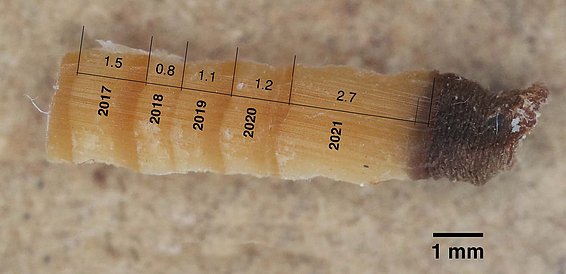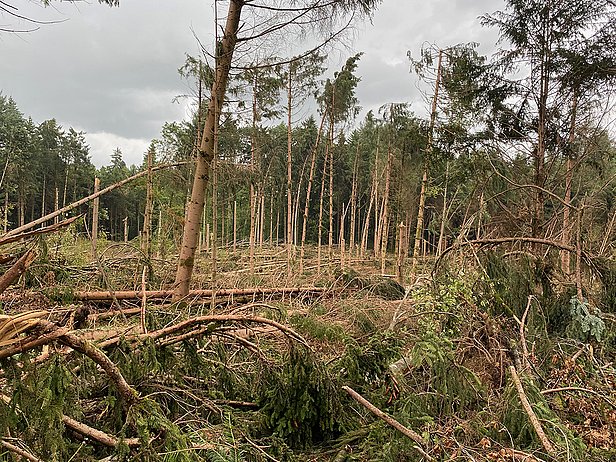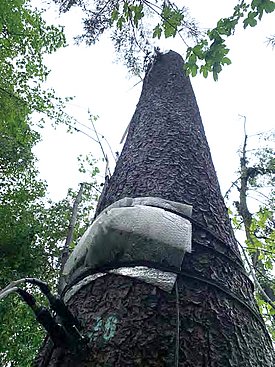When is a tree considered dead? This question renders over 35 000 results with a popular search engine. From amateur gardeners to lawmakers, it is of practical concern to many, not least to forest managers and owners. Indeed, waiting for trees to display unambiguous symptoms of mortality can worsen forest conditions that favor beetle outbreaks, hence affecting healthy trees as well.
The scientific literature too abounds with approaches to understanding the mortality process, quantifying the point of no return and predicting– or reconstructing – the timing of tree death. Some scientists have even come to the conclusion that they must kill trees to study mortality.
Night of the living dead tree ¶
WSL tree physiologist Roman Zweifel did not have to resort to this procedure. In the night of July 13, 2021, the storm ‘Bernd’ swept across Europe, causing 13 billion dollars damage in Switzerland – and hitting four trees within Zweifel’s countrywide monitoring and research network TreeNet. On the WSL campus in Birmensdorf, a 30-meter Norway spruce was snapped off at 4 meters. Further south, in the forest of Muri (canton of Aargau), three beech trees were blown down, their roots partially left in the ground.
This natural disaster had an unexpected silver lining for Roman Zweifel. Like 450 other trees at more than 50 TreeNet sites, all four trees had been equipped years before with point dendrometers – high-precision devices that monitor radial stem growth hourly and at a resolution within a micrometer. Not only were these instruments miraculously left unharmed by the storm. They actually continued recording growth.
Dying, dead, the deadest ¶

The near real-time data displayed on TreeNet’s website after the storm tell an amazing story. The uprooted beech trees kept growing for almost two months. Even more spectacular is that the decapitated spruce achieved 10-15% of its annual growth after decapitation.
For Roman Zweifel and his TreeNet colleagues, these observations can be explained by the fact that the damaged trees used stored carbon. In addition, the Norway spruce had the advantage of no longer transpiring over its foliage, so its cambium cells did not lose turgor, i.e., they remained in a state where cell division and expansion were no longer limited by water deficits. This allowed this tree not only to grow, but even to thrive, as it underwent very little daily shrinkage. Such a finding complements a previous study by Roman Zweifel et al., which had shown that trees shrink during the day, when the air becomes drier, and thus mainly grow at night.
The decapitated spruce was most likely dead by the following spring. Even the high-precision measuring instruments could then no longer detect any physiological activity. As for the uprooted but still living beech trees, they were removed by the forest service in autumn 2021.

Close collaborations ¶
The long-term records and high-resolution data available for these four storm-damaged trees, as well as the other 400 unharmed trees, can enrich current discussions in the scientific community about carbon metabolism and water balance in forest trees. The high temporal resolution of the data combined with the large geographic area covered by TreeNet, especially for tree growth, may be unique worldwide.
TreeNet closely collaborates with other networks and research groups – the eddy flux supersites Seehornwald Davos (LWF/ETH Zurich/SwissFluxNet/ICOS) and Lägeren (LWF/ETH Zurich/SwissFluxNet), the Long-term Forest Ecosystem Research Programme (LWF/WSL), the ETH Zurich (Waldlabor), the University of Basel (Canopy Crane Site Hölstein) and the Institute for Applied Plant Biology (IAP).
Contact ¶
Links ¶
- A few days determine the growth of temperate trees. WSL News, 9.12.2021
- Why trees grow at night. WSL News, 20.6.2021
